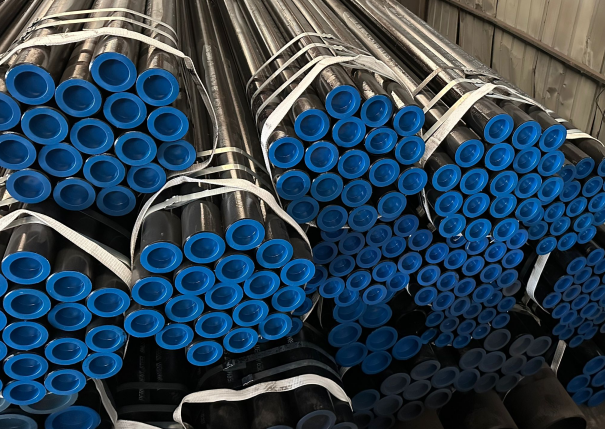
How to Calculate the Weight of Carbon Steel Tube?
The weight calculation formula of carbon steel tube/ tubing:
There are two main weight calculation formulas for carbon steel tubes, one is calculated based on outer diameter, wall thickness and length, and the other is calculated based on volume density.
1. Calculated based on outer diameter, wall thickness and length:
Weight of carbon steel tube (grams) = π × (outer diameter-wall thickness) × wall thickness × length × density
Among them, π≈3.1415926, and the density is 7.85 g/cm³.
2. Calculation based on volume density:
Weight of carbon steel tube (grams) = outer diameter × outer diameter × length × volume density × 0.02466
Among them, the bulk density is 7.85 g/cm³, and 0.02466 is the unit conversion factor.
Due to the allowable deviation of the steel in the manufacturing process, the theoretical weight calculated by the formula is somewhat different from the actual weight, so it is only used as a reference for estimation. This is directly related to the length dimension, cross-sectional area and size tolerance of the steel.

The actual weight of the steel refers to the weight obtained by the actual weighing (weighting) of the steel, which is called the actual weight.
The actual weight is more accurate than the theoretical weight.
Weight calculation example of carbon steel tube:
For example, the weight of a carbon steel tube with an outer diameter of 60mm, a wall thickness of 4mm, and a length of 3m is calculated as follows:
1. Calculated based on outer diameter, wall thickness and length:
The weight of carbon steel tube (grams) = π×(60-4)×4×300×7.85 ≈ 223,149 grams, which is approximately 223.15 kilograms.
2. Calculation based on volume density:
Weight of carbon steel tube (grams) = 60×60×300×7.85×0.02466 ≈ 223,149 grams, approximately 223.15 kilograms.
Things to note when calculating the weight of carbon steel tubes:
1. When calculating, pay attention to the unity of units, such as the unit of length is meter, the unit of density is g/cubic centimeter, etc.
2. When performing calculations, pay attention to control errors. For example, the measurement accuracy of outer diameter and wall thickness should be as high as possible to avoid inaccurate calculation results due to accumulation of errors.
3. In practical applications, the weight of carbon steel tubes is also affected by other factors, such as welding, corrosion, inner wall wear, etc., which need to be comprehensively considered based on specific conditions.
Calculation method of steel weight:
(1) Gross weight: It is the symmetry of "net weight", which is the total weight of steel itself and packaging materials.
The transportation company calculates the freight according to the gross weight. However, the purchase and sale of steel is calculated by net weight.
(2) Net weight: It is the symmetry of "gross weight".
The weight after subtracting the weight of the packaging material from the gross weight of the steel, that is, the actual weight, is called the net weight.
In the purchase and sale of steel products, it is generally calculated by net weight.
(3) Tare weight: the weight of the steel packaging material, called the tare weight.
(4) Weight ton: the unit of weight used when calculating freight charges based on the gross weight of steel.
The legal unit of measurement is the ton (1000kg), and there are also long tons (1016.16kg in the British system) and short tons (907.18kg in the US system).
(5) Billing weight: also known as "billing ton" or "freight ton".
The weight of the steel for which the transportation department charges the freight:
Different transportation methods have different calculation standards and methods.
Such as railway vehicle transportation, generally use the marked load of the truck as the billing weight.
For road transport, the freight is charged based on the tonnage of the vehicle.
For the less-than-truckload of railways and highways, the minimum chargeable weight is based on the gross weight of several kilograms, and rounded up if it is insufficient.
Carbon steel tubes are widely used in construction, petroleum, chemical industry, machinery, ships, automobiles, aviation and many other fields. It is characterized by high strength, good corrosion resistance, excellent processing performance, light weight, low cost, etc. It plays an important role in various industries.
Conclusion:
Through the introduction of this article, I believe everyone has mastered how to calculate the weight of carbon steel tubes. In practical applications, in order to ensure the accuracy of calculations, it is recommended to use more accurate measurement tools as much as possible and take comprehensive considerations into consideration based on specific circumstances.
Read more: Steel Pipe Sizes & Dimensions Chart


